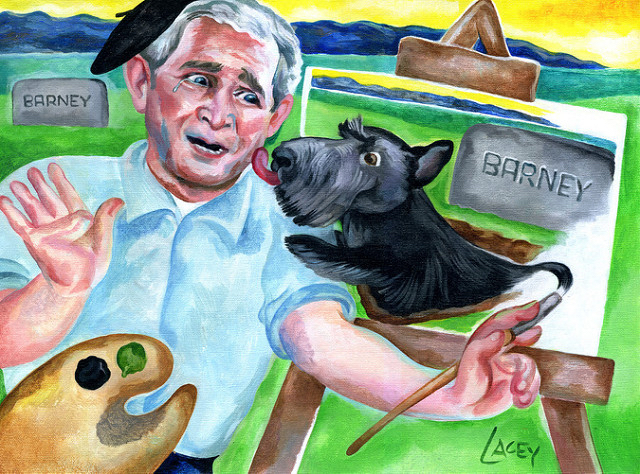This sticker, the latest in Souciant’s series on a youth outreach campaign of Germany’s Left Party, brings back memories of a time when I was both “learning to see,” in the sense Rainer Maria Rilke invokes in The Notebooks of Malte Laurids Brigge, and trying hard not to do so.
When I arrived in the Federal Republic of Germany in July, 1986 to begin my year as an exchange student, I struggled to cope with my sudden illiteracy. More than I ever could have realized back home, I had become dependent on daily reading of newspapers and magazines to anchor my place in the world. And now I was experiencing a fierce withdrawal.
The resulting sense of rootlessness drove me to pay closer attention to my environs than I ever had before. Like the eponymous protagonist of Rilke’s novel, I wandered the streets collecting data that I would have overlooked in the absence of a language barrier. Billboards, flyers and stickers like this one seemed like sources of crucial information precisely because I couldn’t make sense of them.
Print media proved even harder to interpret. But I still felt compelled to run my eyes over their pages, seeking for any clue to their meaning. Proper names I knew were the first and most important foothold: “Ronald Reagan”, “Tschernobyl”, “Challenger”. After a few weeks, though, my mind also started to latch onto nouns that appeared with great frequency: “Wirtschaft”, “Haushalt”, “Atomkraft”.
And then, as I started to make slow, but steady progress in understanding simple German sentences, I began to figure out what certain articles were about. The easiest to comprehend were those that mirrored the words I kept seeing plastered on walls around the city, the sort of politicized topics we’ve been featuring Souciant’s translations under the Randomizer byline.
Back in 1986-1987, the two terms that captured my attention most frequently were “Asylanten” and “Obdachlosen”. The former, meaning “asylum seekers”, intrigued me because, as the grandchild of immigrants from Germany, I still believed that the United States welcomed the world’s poor, huddled masses with open arms. Why wouldn’t the inhabitants of a country that was, even then, clearly lacking in youth want fresh blood to revitalize its culture?
On the other hand, the latter, which literally means “those without a roof over their heads”, surprised me because I had been expecting to spend my year abroad being interrogated about my nation’s problem with homelessness. After years of wandering around Washington D.C. with a stack of quarters ready to hand out to people who would inevitably ask me for anything I could spare, I had been looking forward to a less painful mode of navigating the urban landscape.
I knew that systemic unemployment was a major problem in many European economies, but was also aware that their socio-economic safety net was much more robust than the one we had back home. I was truly shocked to learn that there were lots of Germans living on the street, even if the number was still small by American standards.
In retrospect, it was clear that the developments that had led to the American homelessness crisis in the 1980s — drug and alcohol addiction, rising mental illness, a sharp decline in demand for manual labor — were also at work in Germany, though their impact had been blunted by the legacy of Bismarck’s paternal state.
And, indeed, the dubious American example of the Reagan Era, in which the rich were all of a sudden getting a lot richer at the expense of the rest of the population — a trend that has continued unabated in the ensuing quarter century — was starting to eat away at the European allegiance to “socialized” capitalism.
This sticker, which reads “Does whoever is looking for work find it?”, testifies to the inroads the American model has made in Europe since my year abroad. Evidence of the divide between the haves and have-nots is much harder to ignore in cities like Berlin than it was during the Cold War, despite the best efforts of urban planners to move the working classes — and, more specifically, the not-working working classes — to suburban “reservations” like the notorious banlieues of Paris.
What makes the message of this sticker so richly ironic is that it shows how hard those without work have to work. It’s a lesson being delivered with brutal force by the deteriorating situation in struggling European Union economies like Greece, Spain and Ireland. But it also hits closer to home for those lucky enough to live on the right side of the tracks within the Euro Zone. Or the American equivalent.
I still remember vividly, after returning to the States to attend the University of California at Berkeley in the fall of 1987, how painful it was for me to walk past the crack dealers and addicts lined up on my walk to Ashby BART station and the spare changers who leaned up against the businesses on Telegraph Avenue near campus.
I had learned to see, during my year abroad, that homelessness wasn’t just an American problem, but also intuited the ways in which it was an “American” problem, my country’s dubious gift to a world that was about to lose the counter-model of the Eastern Bloc.
Unfortunately, such consciousness is difficult to sustain. I soon realized that if I wanted to keep going to college in the San Francisco Bay Area, I would not be able to employ my high-school solution to the mixture of guilt and sympathy that confronted me whenever I was asked by strangers for money. My stack of quarters wasn’t inexhaustible, after all, and I was going to have to walk these streets ever day rather than once or twice a month.
In short, having learned to see, I had to learn not to see it in order to cope with my sadness and rage. And I needed to so while I was taking a freshman composition course in which I was reading The Notebooks of Malte Laurids Brigge. Yet I somehow managed to survive this exercise in double consciousness without becoming destructively divided from myself. By the time I’d moved on to graduate school, I had become so efficient at ignoring my surroundings that I found it difficult to grasp why the freshmen I was teaching found the urban experience around the Berkeley campus so emotionally taxing.
Clearly, this sticker is intended to capture the attention of youth who have not yet steeled themselves against the unpleasant sights of the post-Cold War economic landscape. But I also think it does a commendable job at the more difficult task of making the middle-aged adults who acknowledge it — people like me, in other words — remember what it was like to see the suffering all around them or, to be more precise, to not not see it.
Commentary and translation from the German by Charlie Bertsch. Photographed in Berlin by Joel Schalit.






When I first started in Manhattan, I learned not to hand out money to homeless on my regular route. Because whenever they saw you, they’d make a beeline to you. If you give to homeless on the street, best not to do it on your regular route. Also, I know the homelessness situation in San Francisco is supposed to be better. But when I was last there (two years ago), I couldn’t believe how many there were. And how they’d congregate in Golden Gate Park. Nothing comparable in Manhattan (where police wouldn’t allow such assemblies in Central Park).